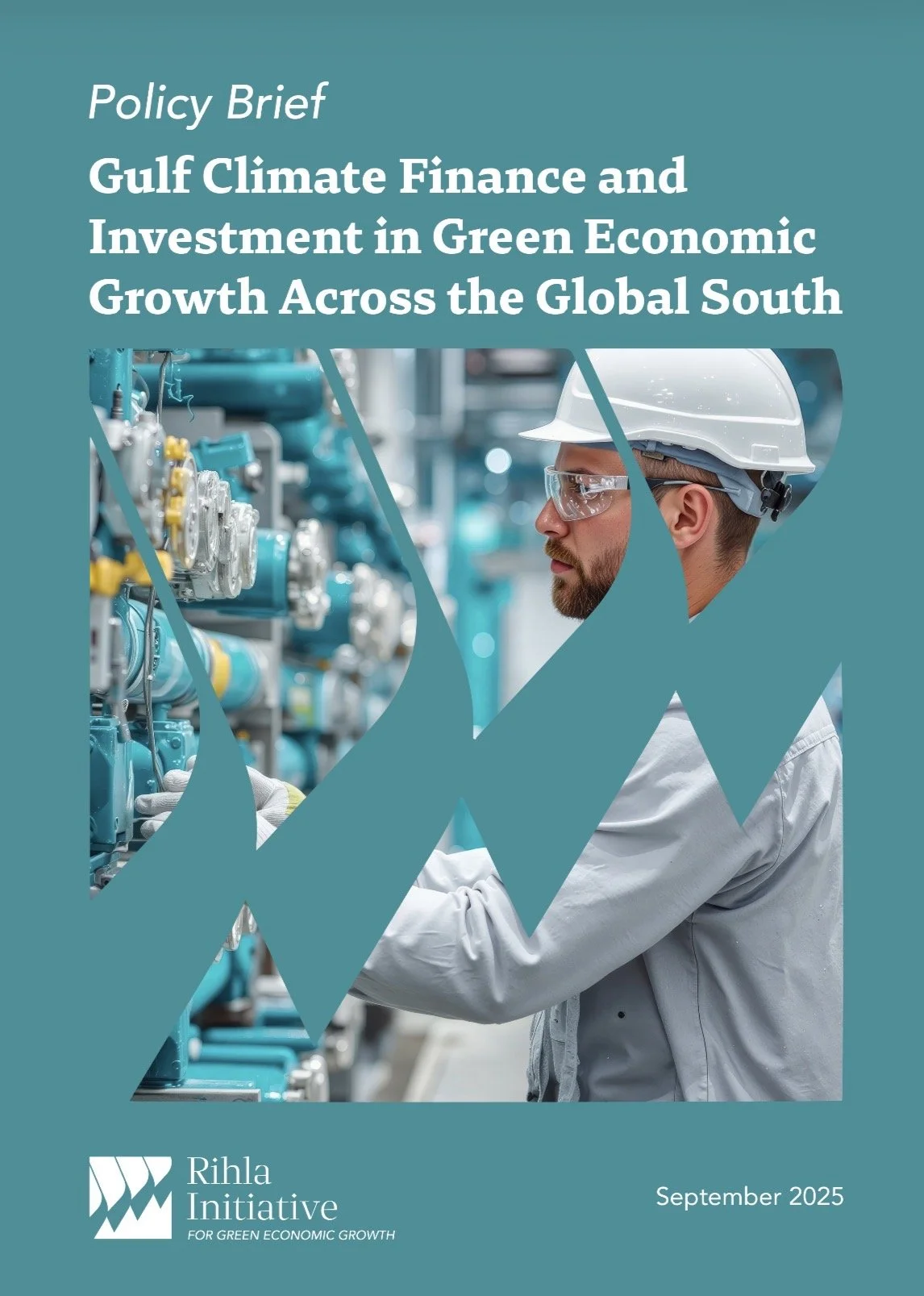Gulf Climate Finance and Investment in Green Economic Growth Across the Global South
Executive Summary
The Gulf states have emerged as pivotal actors in shaping the global landscape of climate finance and green economic growth. Long defined by their role as energy exporters, the member states of the Gulf Cooperation Council (GCC)—Bahrain, Kuwait, Oman, Qatar, Saudi Arabia, and the United Arab Emirates—are now leveraging their financial strength, technological expertise, and growing diplomatic networks to position themselves as leaders in the global transition toward low-carbon, climate-resilient development.
This policy brief reflects the outcomes of a series of convenings by the Rihla Initiative for Green Economic Growth on Gulf climate finance and green growth across four key regions of the Global South: the Middle East and North Africa (MENA), Central Asia and the Caucasus (CAC), South and Southeast Asia (SSEA), and Sub-Saharan Africa (SSA). These regions face urgent climate and development challenges ranging from water scarcity, to food insecurity, infrastructure vulnerability, energy transition pressures, and fragmented governance. At the same time, they offer vast opportunities for collaboration, integration, and investment.
Gulf engagement has the potential to catalyse systemic transformation across the Global South. The GCC’s comparative advantages—access to patient capital, advanced expertise in renewable energy and water management, and experience with blended finance models—position it to accelerate inclusive, climate-aligned growth. Yet capital alone is not enough. Success depends on embedding transparency, equity, and institutional coherence into investment strategies, and on building partnerships that foster local capacity, integrate regional priorities, and generate long-term impact.
In MENA, Gulf investment is driving progress in renewable energy, water security, and industrial decarbonisation, but remains constrained by selective targeting, fragmented planning, and weak private sector integration. In CAC, Gulf financing is accelerating regional modernisation, though fragmented planning, outdated systems, and geopolitical competition continue to hinder sustainable, coordinated investment. In SSEA, large-scale energy projects are advancing the transition, yet adaptation needs in water, agriculture, and rural resilience remain underfunded and poorly integrated into regional frameworks. In SSA, Gulf engagement is expanding in energy, agriculture, and infrastructure, but weak governance, limited technical capacity, and underdeveloped financial systems constrain scalability and inclusivity.
To maximise the impact of its climate finance and green investment strategies, the Gulf must move beyond transactional, project-level engagement towards integrated, regionally anchored partnerships. This report highlights five cross-cutting lessons for the GCC:
Develop regional coordination and risk mitigation platforms to align investments with local priorities and reduce operational and financial risks.
Embed governance and institutional strengthening into all partnerships to support transparency, accountability, and local ownership.
Expand investment in adaptation and resilience, particularly in underfunded sectors such as water, agriculture, and rural electrification.
Leverage Gulf expertise in blended finance and innovative instruments to attract private capital and de-risk projects in challenging environments.
Invest in human capital and knowledge exchange to build skills, foster innovation, and ensure long-term co-leadership with partner regions.
As the global demand for green capital intensifies, the GCC has an opportunity to align outward investment strategies with its own diversification and decarbonisation agendas. By combining financial strength with collaborative and regionally integrated approaches, the Gulf states can advance a model of climate finance that delivers sustainable, equitable growth, and establish the GCC as a leading force in driving green economic transformation across the Global South.
Principal Author: Naser Alsayed
September 2025

